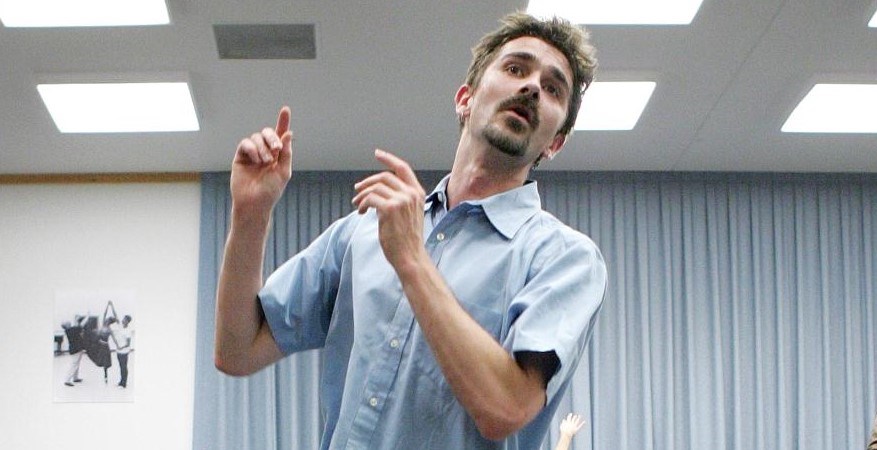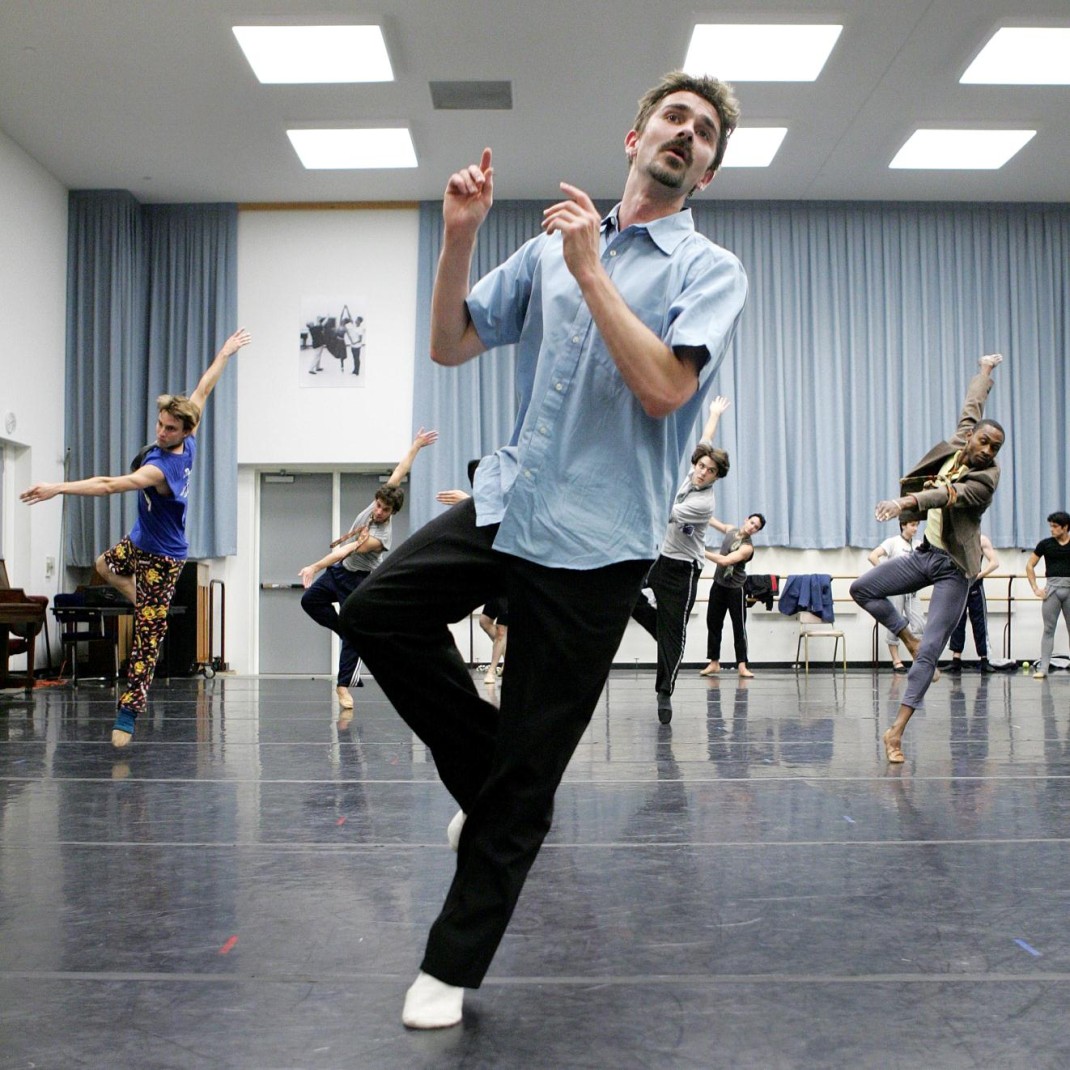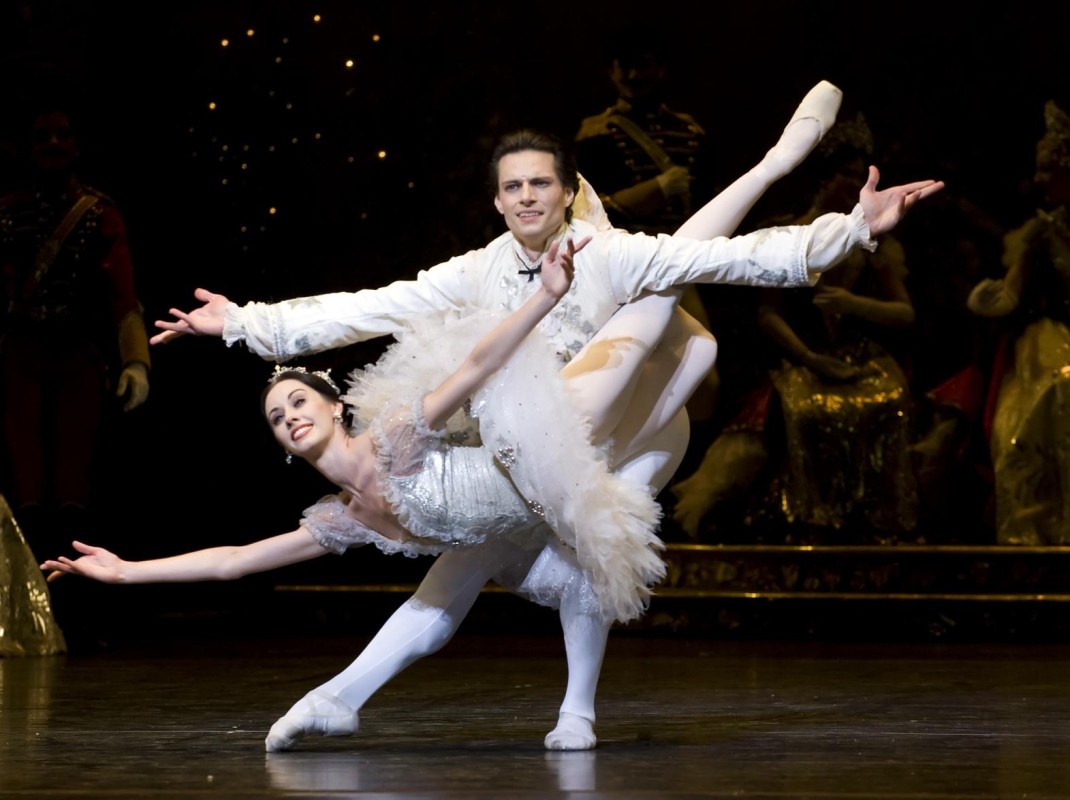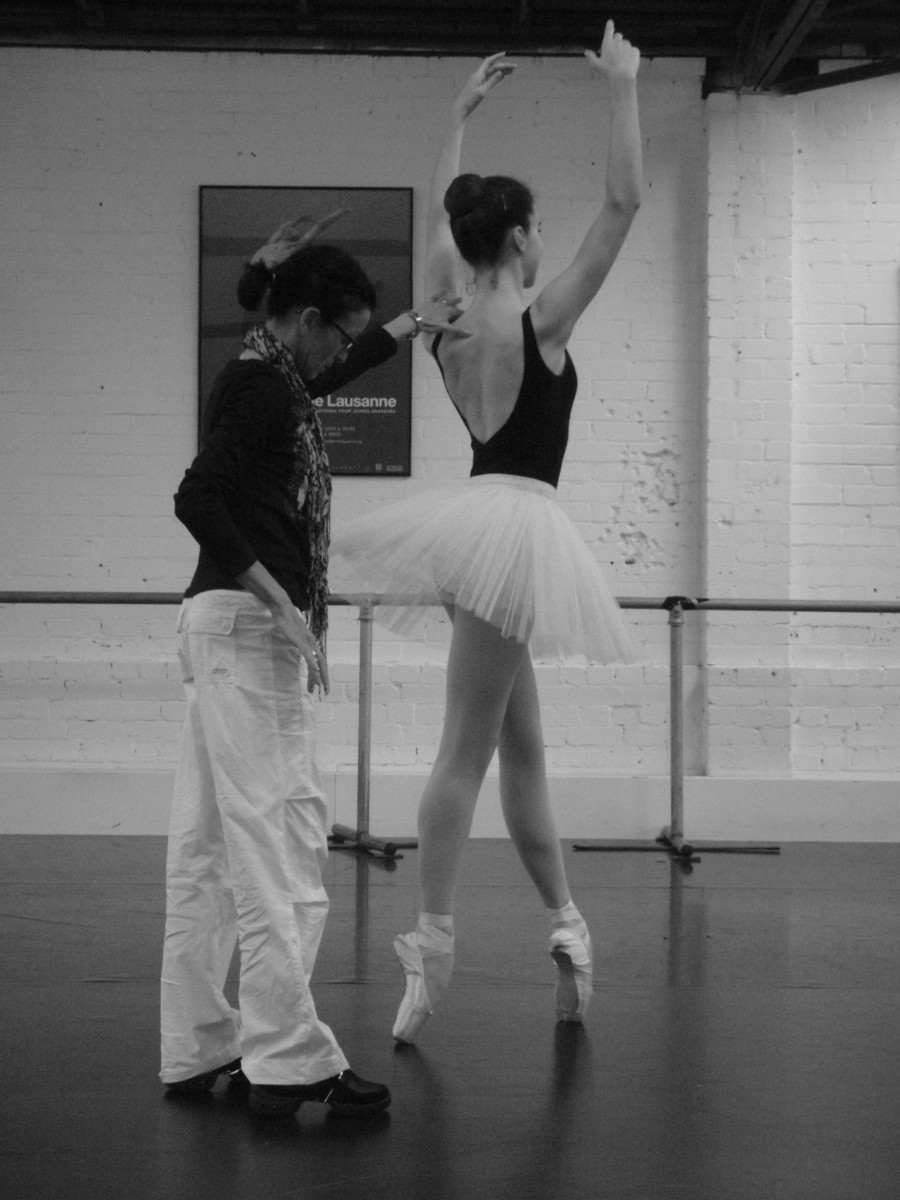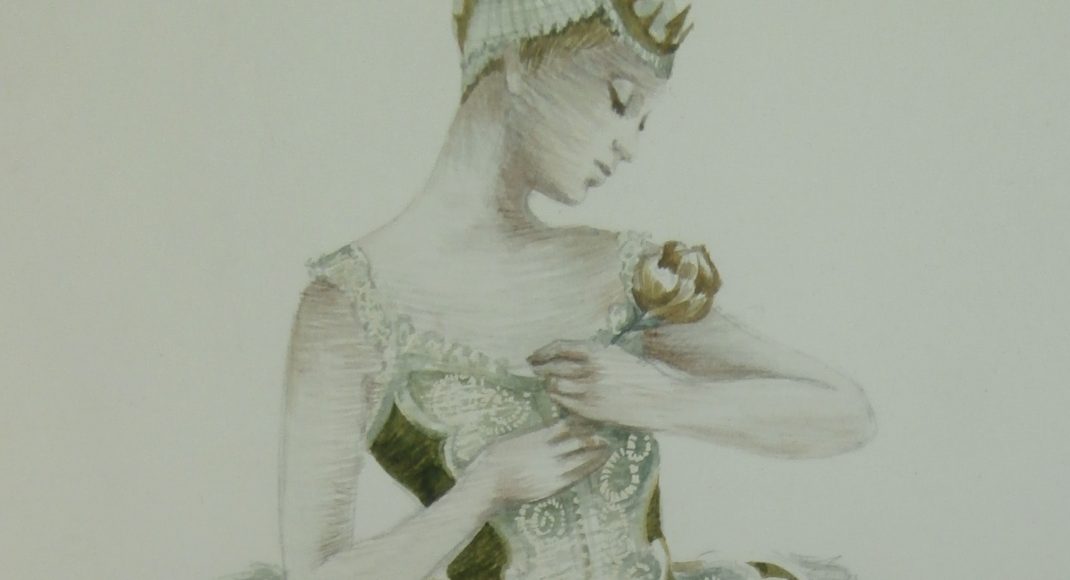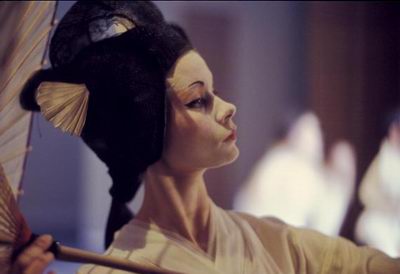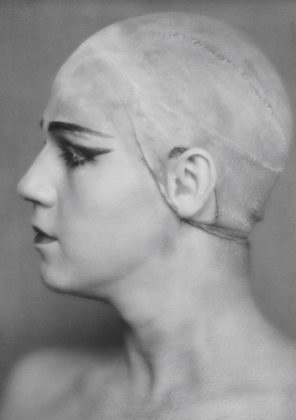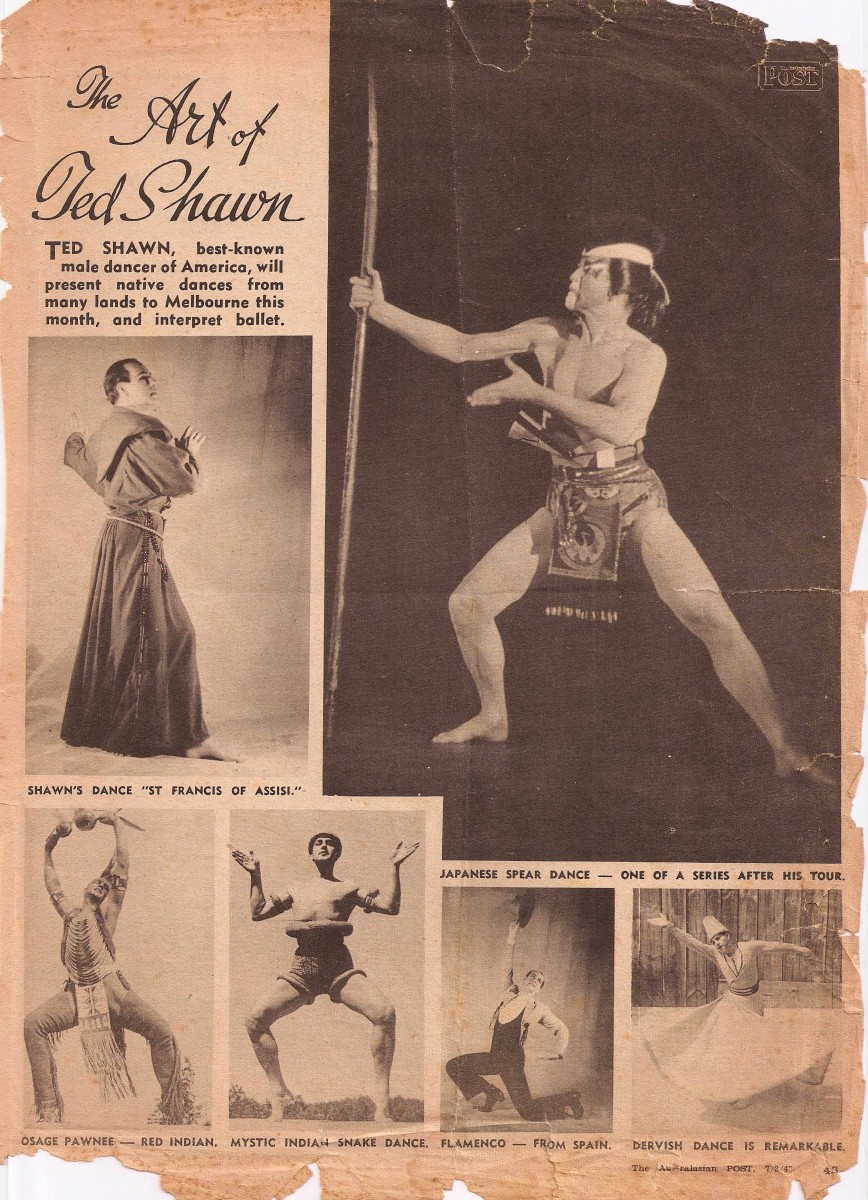In a recent post I recorded some notes about the Australian Ballet’s 1965 production of Robert Helpmann’s ballet Yugen. I was interested in the design for the production and that the costumes were designed, and some made, at a distance.
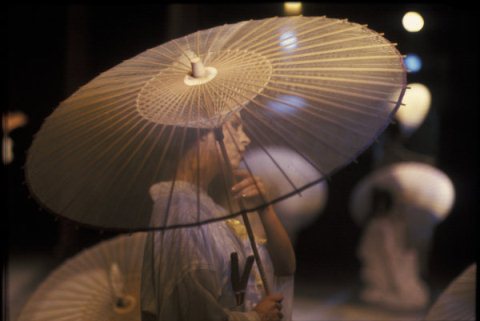
On the other hand, local people made other elements of the design, especially the headdresses and, I have since discovered, probably the cane props that were used in the ballet. These latter items were made, it seems, by a Melbourne-based, probably Chinese artisan. I recently came across a design for a golden tree by Kristian Fredrikson for a production that I have not yet been able to identify. On it there is a note scribbled in pencil, which may or may not refer to the tree and which says ‘Chinese shops in Lit[tle] Bourke [Street] near Swanston [Street] (Yugen) Australian Ballet – sea capes (man who did cane work)’.
But even more interesting material relating to Yugen surfaced accidentally while I was searching through some other archival material. I came across a collection of correspondence from late 1964 between William (Bill) Cronshaw, Geoffrey Ingram and Noël Pelly, then business manager, administrator and publicity manager respectively of the Australian Ballet. The letters and memos I came across concerned the design commission for Yugen. It seems that the original commission went to South Australian artist Lawrence Daws, not Desmond Heeley whose work we eventually saw on stage. Although there is no commissioning letter, and so far no designs by Daws have come to light, a letter written in early December from Cronshaw to Ingram states, ‘I received today a plot plan from Lawrence Daws on the design he has submitted to Helpmann, though this, of course, is dependent on his approving the designs.. There follows a discussion about costing the designs and a note that Bill Akers had some doubts about their viability from a practical point of view.
Two weeks later a note from Pelly to Ingram states that Pelly was enclosing a second print of the promotional brochure, which Pelly says ‘contains no reference to the designer of “Yugen”.’ The brochure is not included with the letter in this case but it seems obvious that in the end Helpmann did not approve the designs by Daws. In a postscript to the letter Pelly notes that he and Peggy van Praagh had had a drink with Daws and his wife in Adelaide a day or so before Pelly sent the letter. Pelly went on to say that Daws ‘seems to have taken the matter extremely well but is acutely curious as to his replacement!’ Three days later, on Christmas Eve 1964, a memo from Stefan Haag of the Australian Elizabethan Theatre Trust to Cronshaw, van Praagh, Akers and Ron Sinclair, notes that the designs for Yugen would be despatched from London ‘next weekend’. A somewhat rapid piece of design work from Desmond Heeley it seems, unless, of course, Helpmann never intended to accept the Daws designs.
Lawrence Daws had spent a large part of 1964 travelling in Asia, including in India, Cambodia, Thailand and Malaya. He returned to Adelaide later in 1964. How the commission for Yugen came about is unclear at this stage and the artist has not been willing to comment.
Not all the reviews of the eventual production of Yugen were positive. Andrew Porter, writing in The Financial Times after the work was shown in the United Kingdom in 1965 wrote, for example, ‘It is a piece of japonaiserie with screens and fans and parasols, and a Noh plot.’ In Australia it was compared by one critic (a little unfairly I think) to ‘a highly refined Japanese Ziegfeld Follies’ and I can’t help thinking that Daws, whose work is introspective rather than decorative, simply did not fit the overt theatricality Helpmann demanded in his works. As Cheryl Stock has written in an article in Brolga in 1996, for Helpmann ‘style and image, the spectacle and the dramatic took precedence over form and structure’; and perhaps it might also be added over any kind of deeply thought through approach.
© Michelle Potter, 9 February 2012.
Please acknowledge this post if you use the information contained in it elsewhere.
